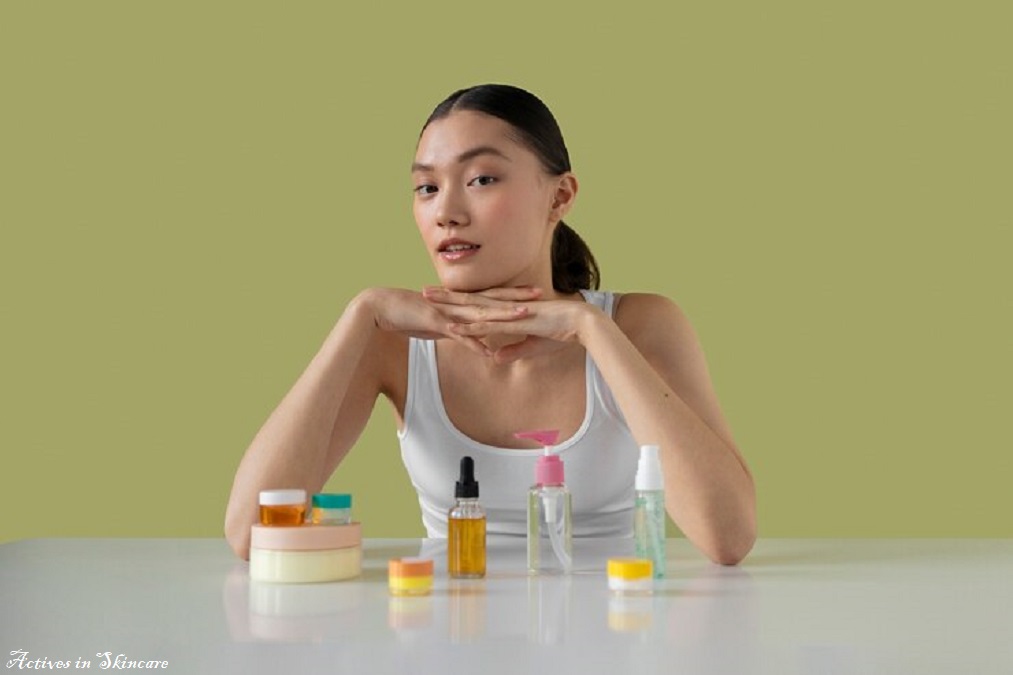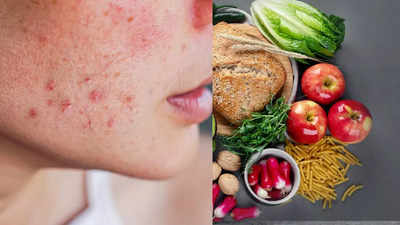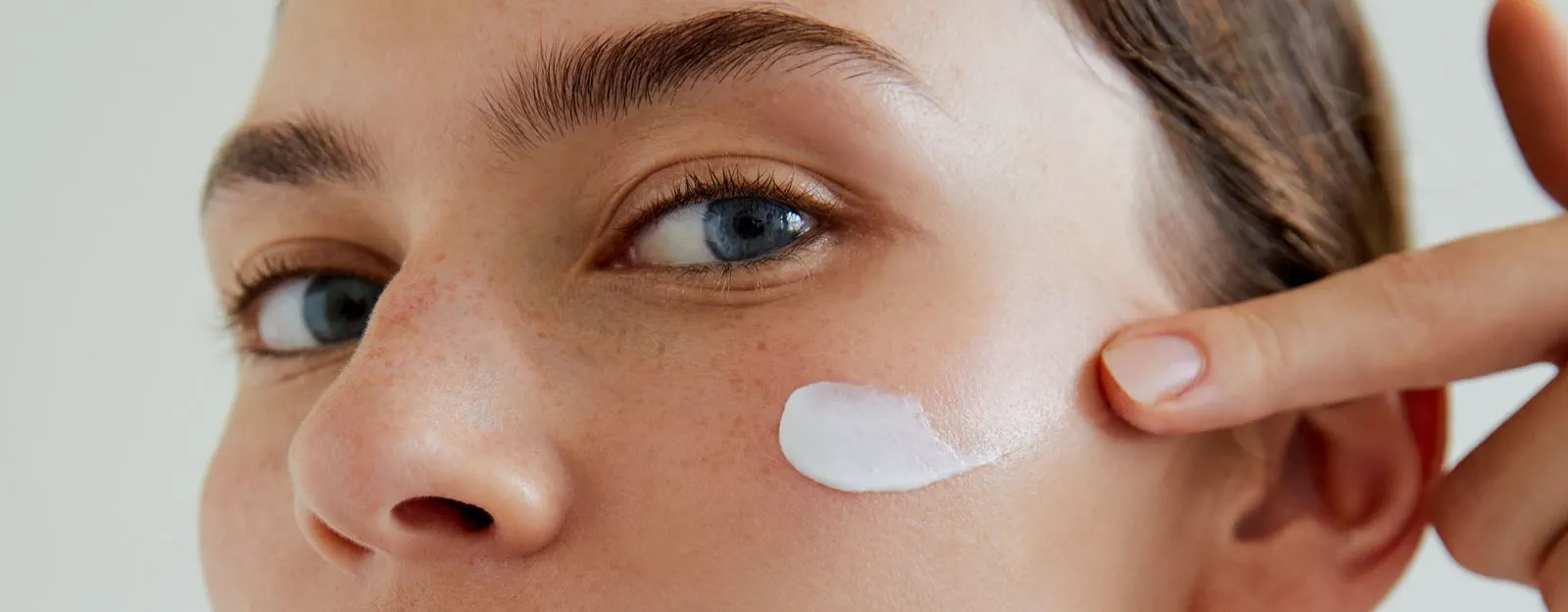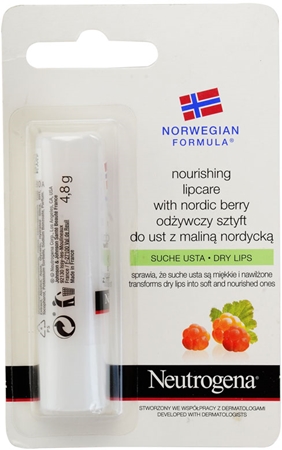Skin
What Are Actives in Skincare?

The field of skincare is vast and includes a wide range of tools, techniques, and regimens designed to preserve and improve the condition and appearance of human skin. Active substances, or simply “actives,” are one of the main constituents in a lot of skincare treatments. These components are the mainstay of any skincare recipe, offering concentrated advantages like anti-aging, exfoliation, hydration, and acne relief. For anyone trying to get the most out of their skincare routine, it is vital to comprehend what active ingredients are and how they work.
What Are Actives?
The components in skincare products that directly and quantifiably affect the skin are known as active ingredients. The main advantages of a skincare product are delivered by active chemicals, not by inactive ones, which act as stabilizers or transporters. These substances, which are frequently supported by in-depth research and clinical studies, are scientifically proven to address particular skin issues.
Typical Active Types
Many active substances, each with special qualities and advantages, are employed in skincare products. Here, we examine a few of the most popular and productive exercises:
Retinoids
Vitamin A derivatives called retinoidoids are well known for their anti-aging and anti-acne effects. While weaker versions like retinol and retinaldehyde can be purchased in over-the-counter medications, the most effective type, retinoic acid (also known as tretinoin), is only available with a prescription.
Advantages:
. promotes the formation of collagen, which minimizes wrinkles and fine lines.
. speeds up cell turnover, resulting in skin that is smoother and more evenly toned.
. clears clogged pores, lowering acne incidence.
Tips for Usage:
. To reduce discomfort and increase tolerance, start with lesser amounts.
. Because retinoids can heighten sensitivity to sunlight when used at night.
. During the day, always wear sunscreen afterward.
Alpha Hydroxy Acids (AHAs)
Water-soluble acids called AHAs are found in milk and fruits. Their main purpose is exfoliation, which aids in removing dead skin cells from the skin’s surface.
Typical AHAs
Glycolic acid: The smallest of the AHA molecules, it comes from sugar cane and is quite efficient but may cause more irritation.
Lactic acid: Derived from milk, it has moisturizing qualities and is milder than glycolic acid.
Advantages:
. enhances the tone and texture of the skin.
. minimizes the appearance of hyperpigmentation and fine wrinkles.
. increases the natural moisturizing ingredients in the skin, improving its moisture.
Tips for Usage:
. To prevent irritation, start with lower concentrations (5–10%).
. Use during the day with appropriate sun protection or at night.
. Steer clear of mixing with retinoids to lower the irritation risk.
Beta Hydroxy Acids (BHAs)
Salicylic acid is the most well-known BHA. Unlike AHAs, BHAs are oil-soluble, allowing them to penetrate and exfoliate within the pores.
Benefits:
. minimizes acne and clears clogged pores.
. lessens redness and swelling.
. enhances the tone and texture of the skin.
Tips for Usage:
. Ideal for skin that is greasy and prone to acne.
. can be applied topically or daily.
. Incorporate with emollients to avert chapping.
Calcium
Ascorbic acid, another name for vitamin C, is a strong antioxidant that has several advantages for skin health.
Benefits:
. minimizes hyperpigmentation and brightens the skin tone.
. increases the synthesis of collagen, enhancing the suppleness of the skin.
. guards against the harm that free radicals can do to the environment.
Tips for Usage:
. To guard against everyday environmental stressors, use in the morning.
. To avoid oxidation, store in a cool, dark location.
. Combine with sunscreen for increased defense.
Vitamin H
Being a humectant, hyaluronic acid (HA) draws and holds moisture in the skin.
Benefits:
. gives extreme hydration.
. plumps the skin, making wrinkles and fine lines less noticeable.
. Fits all skin types, including those with sensitive skin.
Tips for Usage:
. Use on wet skin for optimal absorption.
. To seal in moisture, use a moisturizer after.
. able can be applied twice a day.
The niacinamide
Vitamin B3, or niacinamide, is a multipurpose and well-tolerated active component.
Benefits:
. enhances the function of the skin barrier.
. minimizes the appearance of pore enlargement.
. lowers inflammation and balances the production of oil.
Tips for Usage:
. suitable for routines in the morning and the evening.
. Combines nicely with AHAs and retinoids, among other actives.
. Fits all types of skin.
Glucose
Proteins like collagen and elastin are made up of short chains of amino acids called peptides.
Benefits:
. increases the formation of collagen, firming the skin.
. minimizes the visibility of wrinkles and fine lines.
. improves the skin’s natural renewal and healing processes.
Tips for Usage:
. both in the morning and at night.
. frequently present in moisturizers and serums.
. Fits all types of skin.
. Choosing Skin-Friendly Active Ingredients
Depending on your unique skin concerns and goals, the appropriate active ingredients should be chosen. Here is a selection guide to assist you:
For Anti-Aging
Seek for products with retinoids, vitamin C, peptides, and AHAs if aging is your main concern. While vitamin C and AHAs can brighten the face and enhance texture, retinoid and peptide combinations can increase the formation of collagen in the skin.
For Skin Prone to Acne
BHA, or salicylic acid, is a need for everyone with acne. Additionally beneficial are retinoids and niacinamide, which lessen inflammation and stop clogged pores.
For Skin That’s Dry or Dehydrated
The addition of hyaluronic acid is a great option for increasing hydration. Moreover, niacinamide helps strengthen the skin’s barrier, which aids in moisture retention.
In the case of hyperpigmentation
AHAs and vitamin C both work well to lessen hyperpigmentation. Additionally, niacinamide can help by lightening dark spots and evening skin tone.
Combining Actives
Even if combining several active ingredients in your skincare routine can improve it, it’s crucial to mix them carefully to prevent irritation. Here are some rules to follow:
AHAs/BHAs and retinoid
For many people, using retinoids in combination with AHAs or BHAs can be too harsh. If you choose to utilize both, use retinoids at night and AHAs/BHAs in the morning. Alternatively, you can take both.
AHAs/BHAs and vitamin C
Combining acidic ingredients like AHAs or BHAs with vitamin C might irritate skin. Take AHAs and BHAs at night and vitamin C in the morning.
Retinoids and Niacinamide
Retinoids and niacinamide work together to improve skin barrier function and lessen irritation. It is possible to utilize these two activities in the same regimen or combination.
Safety and Precautions
Even while active substances have several advantages, it’s important to utilize them responsibly:
Patch Test: To ensure there are no negative reactions, run a patch test before adding a new active.
Start Slow: Give your skin time to adjust before introducing new active ingredients.
Sun Protection: Several substances can make you more sensitive to the sun. During the day, wear sunscreen at all times.
Speak with an Expert: To develop a customized skincare regimen, speak with a dermatologist if you have any particular skin issues.
Conclusion
Your skincare routine can be fully optimized with the help of active substances. You can effectively treat your skin concerns by making informed judgments based on your understanding of active ingredients and their mechanisms of action. The correct actives may make a huge impact on your skin care regimen, whether you’re trying to treat acne, prevent signs of aging, or just want to make your skin appear better overall. To get the best benefits for your skin, always prioritize sun protection, mix new activities carefully, and introduce them gradually.
Skin
Can Dietary Choices Influence Skin Pigmentation?

The adage “you are what you eat” holds a surprising veracity when considering the vitality and hue of your skin. While factors like heredity, lifestyle, and skincare regimens undeniably shape your dermal health, the food you consume wields its unique influence. Certain edibles can accentuate or subtly shift your natural complexion, lending it a luminous radiance or, conversely, prompting discoloration. But to what extent can nutrition modify skin pigmentation? Let’s delve into the scientific intricacies of this captivating connection.
Carotenoids: Nature’s Pigment Architects
Carotenoids, organic pigments residing in produce like carrots, spinach, sweet potatoes, and tomatoes, are responsible for their vivid yellow, orange, and red tones. Upon ingestion, these pigments are stored within the skin’s outermost layer, imbuing it with a sunlit, golden hue. This phenomenon, often termed “carotenoid-induced skin coloration,” exemplifies how diet directly interacts with dermal appearance.
Research substantiates that individuals who incorporate carotenoid-rich provisions into their meals often exhibit a healthier, more alluring skin tone. However, this effect is transient, dissipating once the consumption of such nutrient-dense foods declines.
Beta-Carotene and Its Surprising Effects
A prominent member of the carotenoid family, beta-carotene, is particularly adept at altering skin tone. Found in abundance in pumpkins, carrots, and yams, this compound can accumulate in the skin with excessive consumption, leading to a condition known as carotenemia. This temporary and benign state renders the skin a yellowish-orange tint, a striking testament to how dietary elements manifest visibly.

Hydration: The Unsung Hero of Skin Vitality
While water itself doesn’t transform pigmentation, it remains indispensable for preserving skin suppleness and averting dryness. Adequate hydration amplifies your skin’s natural brilliance, making it appear dewy and invigorated. In essence, water functions as a silent enhancer of your dermal luminosity.
Antioxidants: Guardians of Radiance
Foods imbued with antioxidants—like berries, green tea, and walnuts—fortify your skin by neutralizing harmful free radicals that damage cells and incite pigmentation irregularities. Regular consumption of these nutrient powerhouses fosters an even, radiant skin tone, underscoring the protective synergy between diet and dermal health.
Culinary Culprits Behind Discoloration
Not all dietary choices illuminate the skin. Certain foods detract from its vitality:
- Processed Sugars and Snacks: Excessive intake inflames the body, manifesting as redness, blemishes, and lackluster skin.
- High Sodium Content: Overindulgence in salt dehydrates the body, leaving the skin pallid and fatigued.
- Allergy-Inducing Foods: For some, food sensitivities can provoke rashes, discoloration, or uneven pigmentation.

Cultural Perspectives on Diet and Skin Brilliance
Across global cultures, dietary customs play an integral role in nurturing skin radiance.
- South Asia: Turmeric, revered for its anti-inflammatory prowess, is a culinary cornerstone for enhancing skin clarity.
- East Asia: Green tea is cherished for fostering an ethereal, even-toned complexion.
- Mediterranean Region: Olive oil and nuts, staples of this diet, are lauded for promoting glowing, youthful skin.
Can Food Permanently Transform Skin Tone?
Despite its temporary influence, food cannot permanently alter melanin levels—the pigment dictating your natural skin color. Genetic coding and sun exposure govern melanin production, limiting the extent to which diet alone can modify pigmentation.

Culinary Tips for Radiant Skin
For a diet that enhances skin health and luminosity, consider these recommendations:
- Vibrant Produce: Infuse your meals with fruits and vegetables brimming with carotenoids and antioxidants.
- Omega-Rich Fish: Fatty fish like salmon deliver essential lipids that hydrate and soothe skin.
- Vitamin E Sources: Nuts and seeds shield skin cells from oxidative stress.
- Whole Grains: Support dermal repair with nutrient-dense grains.
Conclusion:
While dietary choices cannot override genetics, they play an undeniable role in amplifying your skin’s texture, tone, and radiance. By mindfully selecting nutrient-rich foods, you can embrace a complexion that reflects health and vitality. Remember, the nourishment on your plate is mirrored in your skin—so let it glow with wholesome intention.
Skin
Natural Face Moisturizers for Rosacea: Reviews & Buyers Guide

Table of Contents
Tips on Choosing the Right Moisturizer For Your Skin
Advantages of Using a Natural Face Moisturizer
1. These creams can help to reduce wrinkles:
2. Moisturizers are ideal for your skin:
3. The oils protect your skin:
4. The creams shrink enlarged pores:
5. The moisturizers down rashes:
What to Consider When Looking for Moisturizers for Rosacea
Best face wash and moisturizer for rosacea: Moisturizing your skin is a great way to protect your skin when treating rosacea. Some natural face moisturizers offer protection against environmental factors that exacerbate rosacea symptoms.
Before you settle on a moisturizer, read this review carefully, and always talk to your dermatologist.
- Avoid moisturizers that have too many fragrances. You should also avoid harsh cleansers, or any products that contain alcohol as they may contribute to rosacea outbreaks.
- Watch out for rosacea irritants found in different skin care products. They include alcohol, fragrance, Hazel, eucalyptus oil, peppermint and menthol. Other things you want to avoid include exfoliating agents, astringents and anything else that’s harsh for sensitive skin.
- Test any product on a peripheral area before you apply it on your skin. That will help you avoid any product that you react to and take note of the ingredients. Rosacea irritants vary from person to person, and your skin’s reaction should be your guide.
Mistakes to Avoid When Applying Moisturizers
Over-saturating your skin
Rubbing the skin too hard
Not allowing the cream to sink in
Forgetting the area under the eyes
Forgetting the neck area
What you Should Know Before Using Moisturizer for Rosacea
1. Premature wrinkles:
2. Your complexion may be dull and flaky:
3. Your layer of protection may become lost:
4. Your skin may become itchy:
Read the Label
Sensitive skin
Bland moisturizers
Best face wash and moisturizer for rosacea: These moisturizers are free from harsh ingredients that irritate the skin. You want to avoid anything that can trigger a flare-up. Avoid using moisturizers that have redundant components. The best products alleviate your skin’s dryness. Avoid moisturizers with alcohol, fragrances and related additives.
Avoid acne treatment products
Regardless of whether your rosacea is accompanied with pimples, it is not advisable to use moisturizers formulated for treating acne. They have ingredients such as benzoyl peroxide and salicylic acid that can dry your skin. Consult a dermatologist for the best way to treat acne while dealing with rosacea.
Calming ingredients
Try using moisturizers that have a calming effect on your skin to reduce the symptoms of rosacea. Chamomile, aloe and green tea are natural products that have a soothing effect. That will help to lessen the redness and inflammation you could be experiencing.
Sunscreen
Exposure to the sun is a known trigger for rosacea flare ups. Choose a moisturizer with an SPF 15 protection or higher or stay covered!
5 of the Best Moisturizers for Relieving Rosacea Reviewed
1. Miravage Facial Redness and Rosacea Relief Cream & Anti-Aging Moisturizer Serum
PROS
- You can wear it under your makeup
- Offers anti-aging benefits
- There is no greasy feeling
- Quickly absorbed into your skin
CONS
- Has a light scent that lingers
2. Era Organics Face Cream
PROS
- 60-day money back guarantee
- Non-greasy formula
- Has anti-aging properties
CONS
- Can be a bit expensive
3. Aveeno Eczema Therapy Moisturizing Cream
PROS
- Recommended by dermatologists
- Fast acting formula that hydrates and soothes
- Steroid and fragrance free
- Reasonably priced
- Great packaging for easy use
CONS
- Relatively thick formula feels heavy during application
4. HoneySkin Organics Aloe Vera Ultimate Face and Body Cream
PROS
- Organic product
- Doesn’t have fillers like mineral oils, parabens or water
- Light non-greasy formula
- No fragrance
CONS
- A little bit costly
- Few people are allergic to some ingredients
5. La Roche-Posay Soothing Moisturizer
PROS
- Fragrance free
- Reduces chances of skin dryness
- Easy to apply light texture
CONS
- It is relatively expensive
Conclusion
Dermatologists still have a long way to go about rosacea. Scientists are still learning what its real causes are and the best way to treat it. While there may be some genetic factors, the environment has a big contribution as well. There are different underlying factors causing rosacea. People battling it should make choices that eliminate the risk of outbreaks. Take note that your diet can trigger rosacea flare-ups. You want to avoid spicy foods, hot foods and drinks, and alcoholic beverages. But a moisturizer designed for those suffering from rosacea can help for some. As per the review, the Honeyskin Face & Body Cream stands out to me as the best moisturizer for rosacea here. Just remember that everyone’s skin reacts differently. Trial & error and speaking to your dermatologist are a couple of ways you can figure out which cream will work for your skin.
Skin
Neutrogena Nordic Berry Lip Balm

For those who prize meticulous lip care, the Neutrogena Nordic Berry Lip Balm emerges as a singular gem. Revered for its remarkable capacity to nurture, rejuvenate, and shield lips from the merciless grip of environmental extremities, this balm epitomizes the harmony of scientific innovation and nature’s bounty. Drawing inspiration from the nutrient-laden Nordic berry, it offers an exquisite confluence of advanced dermatological craftsmanship and organically sourced constituents. Below, we explore why this product claims a venerated spot among lip care connoisseurs globally.

Why Neutrogena Nordic Berry Lip Balm Stands Apart
This isn’t just another run-of-the-mill lip balm—it’s an intricate symphony of potent natural extracts and cutting-edge dermatological precision. Key attributes include:
- Infusion of Nordic Berry Extracts: These berries, abundant in antioxidants and vital nutrients, neutralize free radicals and infuse lips with deep hydration.
- Dermatologist-Endorsed Integrity: Clinically validated for its mildness, this balm suits even the most delicate lips.
- Enduring Moisturization: In contrast to the fleeting hydration offered by many alternatives, this balm ensures extended softness and resilience.
Dissecting the Key Ingredients
Nordic Berry Extract
As the core essence of this formulation, Nordic berry extract delivers unparalleled skin-enhancing benefits. Rich in vitamins C and E, it fortifies against environmental adversities while restoring suppleness.
Glycerin
Esteemed as a humectant, glycerin magnetizes moisture, safeguarding lips against aridity.
Panthenol (Pro-Vitamin B5)
Renowned for its reparative prowess, panthenol alleviates discomfort caused by cracked or inflamed lips, promoting swift recovery.
Shea Butter
This natural emollient cocoons the lips in a barrier of hydration, thwarting damage from icy winds and relentless heat.

Advantages of Using Neutrogena Nordic Berry Lip Balm
- Profound Moisture
This balm obliterates dryness, leaving lips velvety smooth. Its humectant-emollient blend delivers moisture unparalleled in longevity. - Defensive Antioxidants
Empowered by Nordic berry extract, the balm shields lips from oxidative stress, protecting against UV rays and pollution. - Extended Wear Time
Unlike its peers, this balm minimizes the need for frequent applications, offering sustained comfort throughout the day. - Luxurious Texture and Subtle Scent
Its silken consistency glides effortlessly across lips, while the faint aroma of Nordic berries provides a delightful sensory experience. - Adaptability Across Seasons
From frosty winters to sweltering summers, this balm is indispensable for year-round lip care.
Optimal Usage for Maximum Benefit
To harness the full potential of Neutrogena Nordic Berry Lip Balm, consider the following regimen:
- Gentle Exfoliation: Slough away dead skin cells with a mild lip scrub.
- Generous Application: Evenly coat your lips for comprehensive hydration.
- Reapplication Protocol: While its longevity is noteworthy, reapply after meals or exposure to severe conditions.
- Pairing with Lip Masks: For intense care, combine it with an overnight lip treatment.

A Comparative Glance
Positioned ahead of its competitors, Neutrogena Nordic Berry Lip Balm prioritizes the root causes of lip distress. Unlike generic alternatives offering superficial relief, this balm provides enduring solutions through its innovative blend of natural antioxidants and hydrating agents.
What Distinguishes It:
- Pure Ingredients: Free from irritants like parabens and synthetic fragrances.
- Expert Recommendations: Favored by dermatologists for its hypoallergenic attributes.
- Affordable Luxury: Top-tier efficacy without an exorbitant price.
Dermatological Advocacy
Esteemed by skin experts, Neutrogena Nordic Berry Lip Balm consistently proves its mettle. Its hypoallergenic composition and reparative properties make it suitable for all age groups, including children, ensuring lips remain protected and resilient.
The Ideal Candidate for This Balm
This balm caters to a wide audience:
- Chronic Dryness: An elixir for persistently parched lips.
- Extreme Climates: A fortress against severe cold, wind, and UV exposure.
- Sensitive Individuals: Free from harsh chemicals, ensuring compatibility with delicate skin.
Glowing Testimonials
Enthusiastic users worldwide laud this balm’s transformative effects:
- “No lip balm has ever worked as effectively! My lips feel rejuvenated all day.” – Sarah M.
- “The fruity scent and long-lasting hydration make this a staple for me.” – James K.
- “Winters used to wreak havoc on my lips—this balm changed everything.” – Emily R.
Accessibility
Conveniently available, Neutrogena Nordic Berry Lip Balm can be procured through:
- The official Neutrogena website.
- Major platforms like Amazon.
- Retail giants such as Walmart and Target.
- Pharmacies including CVS and Walgreens.

Closing Thoughts
Neutrogena Nordic Berry Lip Balm transcends ordinary lip care to deliver an unparalleled experience. Blending the nourishing essence of Nordic berries with dermatologist-approved science, it offers year-round hydration, protection, and repair. For anyone seeking soft, healthy lips, this balm stands unrivaled in its category.
-

 Skin10 months ago
Skin10 months agoNatural Oil-Free Face Moisturizer Reviews & Buyers Guide
-

 Hair2 months ago
Hair2 months agoDoes a Flat Iron Kill Lice? Fact or Myth?
-

 Hair10 months ago
Hair10 months agoDoes a Flat Iron Kill Lice? Fact or Myth?
-

 Skin9 months ago
Skin9 months agoAbout Face Beauty: Tips for Enhancing Your Natural Beauty
-

 Skin10 months ago
Skin10 months agoNeutrogena Naturals Multi-Vitamin Nourishing Face Moisturizer Review
-

 Hair10 months ago
Hair10 months agoFunction of Beauty: Personalized Hair Care for Your Unique Needs
-

 Skin9 months ago
Skin9 months agoBeautiful Nails: Tips and Tricks for Healthy and Gorgeous Nails
-

 Hair10 months ago
Hair10 months agoTitanium Flat Iron vs. Ceramic
